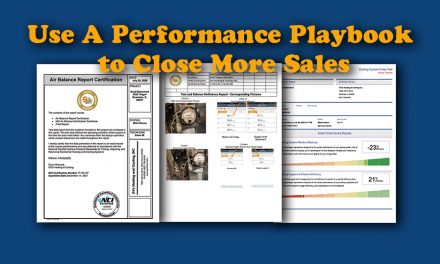If you know your required room airflow values, you can compare the design airflow to measured airflow ‘what it truly delivered. If measured airflow isn’t within ?10% of design, you have some work to do.
After you measure all supply registers, add all their airflow together to determine total delivered supply airflow into the living space. It should be within ?10% of the required and measured fan airflow. You can follow the same process for return grille measurements.
It’s common to notice a slight difference in fan airflow and total delivered airflow. The variance is because of different measurement methods and test instruments. Don’t assume a discrepancy in airflow readings is because of duct leakage ‘ it might be variations in your readings.
Where to Draw the Line?
How do you know how far to take airflow testing? Most Performance-Based Contractors typically draw the line between fan airflow and delivered airflow testing.
Or they consider just measuring supply airflow in the most uncomfortable room. It’s important to establish a rule that you don’t turn your testing into a science project. Each test must have a reason and an intended outcome for taking them.
By the way, full airflow diagnostics demand an additional fee due to the time and specialized skills involved in the procedures. Your job is to look beyond the equipment at the entire duct system and determine how well it performs from an airflow standpoint.
To keep it simple, many companies limit airflow measurement to fan airflow for the following job titles:
- Installers doing a first-time system startup
- Service technicians running emergency calls
- Maintenance technicians on maintenance agreements, and
- Salespeople on sales calls.

Companies usually reserve delivered airflow for more specialized testing and diagnostics. These include:
- Duct system renovation and installation verification
- Customer education and discovery on a sales call
- Airflow diagnostics for comfort troubleshooting, and
- Air balancing.
Obstacles in the PATH
As you continue down the Performance PATH, you will meet airflow obstacles just like you did with static pressure. For some, these are too great to overcome, and they quit before they reach the gold at the end of the path.
Two common obstacles are:
- Plotted fan airflow that makes little sense.
- Air balancing hood readings that don’t add up.
Both situations are learning opportunities in disguise if you have the persistence to stick with airside performance.
Our Next Stop
Temperature is the next stop on the performance path. When you add temperature to airflow, you see the HVAC system in a new light.
You understand how it performs in a way that very few HVAC professionals can. Before you look at temperature, be sure you’ve got a good handle on airflow.
Look at airflow as a fork in the path. You may stick with the fan airflow pathway, or you may venture down the delivered airflow path.
Both will improve your installations and opportunities, however only one can take you to the highest level of airside performance.
If you take advantage of fan airflow, you will see a significant improvement in reducing callbacks, warranty costs, and customer complaints. Add in delivered airflow and outside air to round out your offerings and your services will be unmatched.













Recent Comments